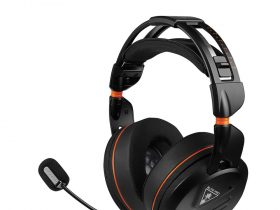There have been radical changes in the scanner technology and these devices are becoming better in scanning barcode. Linear scanners can be based on CCD or charge coupled device technology. In this case, the CCD can capture various light levels reflected by the individual bars. Linear imagers could come with its own light source, often based on low-power LED to keep light on indefinitely. Because of its solid-state characteristic, linear imagers can be more dependable, especially compared to the laser scanners. When scanning barcode, linear imagers light up the LED lamp and the CCD component capture the reflected light using the lens. It detects the troughs and peak of the signal and a specific algorithm is used to translate the signal into specific data. Linear imagers have analog to digital converters and the pace could depend on the reliability of the software and the speed of the computer.
Newer linear imager models are equipped with additional features, such as improved decoding software and hardware to boost success rate and enhance speed. Speedy processors and scanners with better performance could also help linear imagers to scan barcodes quickly. Barcode scanners could also be based on the laser technology. They may include oscillating mirrors with beams that automatically pass across the barcodes. Laser scanners may read from farther distances and they could have high scanning range.
Laser can be released as small beams and they can help us scan barcodes from farther away, because laser is more coherent than LED light. The diameter of the light can still be small enough to cover the entire barcode blocks. Unfortunately laser emitters can be more expensive than linear imagers. Also, after a period of use, oscillating mirrors may get displaced and the overall quality of scanning can be compromised. There are static and handheld models for linear and laser imagers. The handheld model is more convenient to use with up to 300 times scanning each second, while the static one is usually faster with up to 1800 times scanning each second. There are other factors that we need to consider such as humidity, scan range, the barcodes condition and others. If the scanning distance is no farther than 18 inches, then we may consider using the linear imagers.
Barcode scanners should support major barcode standards, such as Code 128, Code 39, and EAN/UPC. It should be noted that linear imagers are less capable in scanning damaged, faded and poor quality barcode blocks. However, linear imagers can be more reliable, because they are solid-state equipment without any variable components. Linear barcodes could also be more useful for a variety of purposes, as an example, it is possible to scan directly from the computer screen. Performance can be determined by the neatness of the scanning results, as well as the scanning zone and the scan range. Within its scan range, linear imagers can perform extremely well. For industrial uses and large-scale retail use, it is important to choose scanners with higher scan rate.

























